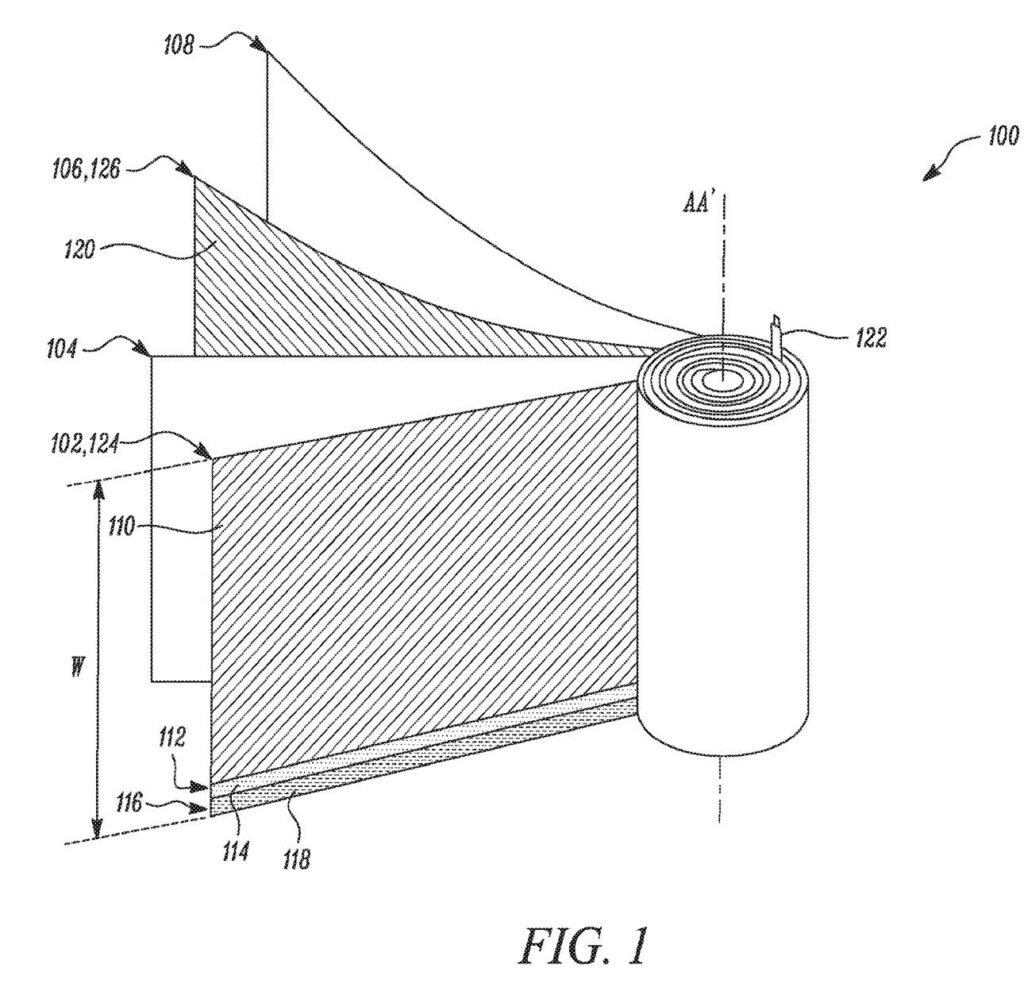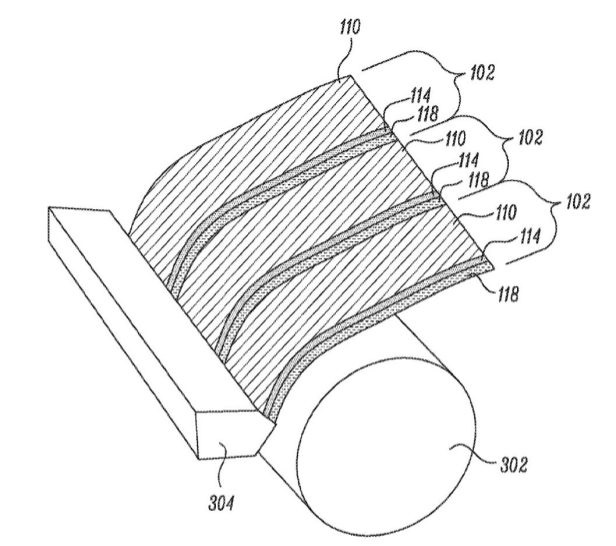Tesla has just patented a new type of battery cell that, according to Elon Musk himself, the company’s chief executive, will be “much more important than it sounds.” In the patent application, Tesla describes the limitations of cells currently in use by the industry by way of introduction:
“Current cells use a jelly-roll design in which the cathode, anode, and separators are rolled together and have a cathode tab and an anode tab to connect to the positive and negative terminals of the cell can. The path of the current necessarily travels through these tabs to connectors on the outside of the battery cell. However, ohmic resistance is increased with distance when current must travel all the way along the cathode or anode to the tab and out of the cell. Furthermore, because the tabs are additional components, they increase costs and present manufacturing challenges.”
To solve these problems, Tesla has patented a new type of cell dubbed ‘Cell with a Tabless Electrode’: “A cell of an energy storage device with at least one electrode that is tabless, and methods of forming thereof, are described. The cell includes a first substrate having a first coating disposed thereon, wherein a second portion of the first substrate at a proximal end along the width of the first substrate comprises a conductive material. An inner separator is disposed over the first substrate. A second substrate is disposed over the inner separator. The second substrate has a second coating disposed thereon. The first substrate, the inner separator, and the second substrate in a successive manner, the first substrate, the inner separator, and the second substrate are rolled about a central axis.”

An internal separator is arranged on the first substrate. A second substrate is arranged on the inner spacer. The second substrate has a second coating. The first substrate, the internal separator, and the second substrate are successively intercalated the first substrate and wound around a central axis. It is highly likely that Tesla will reveal new details of this new type of cells throughout this month during the expected “Tesla Battery Day”.
In recent times, the Californian company has patented numerous advances in the field of batteries, something that is not surprising considering that the firm has the goal of becoming an independent cell manufacturer in the short term. Its objectives are clear: useful life of 1.6 million kilometers, a price below $100 per kWh, and probably a higher energy density than current cells.

